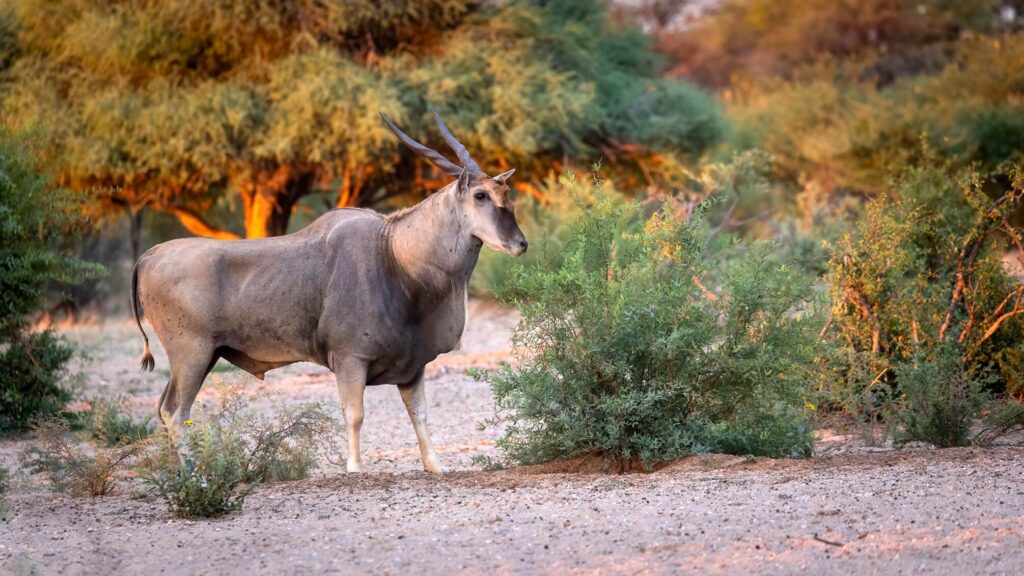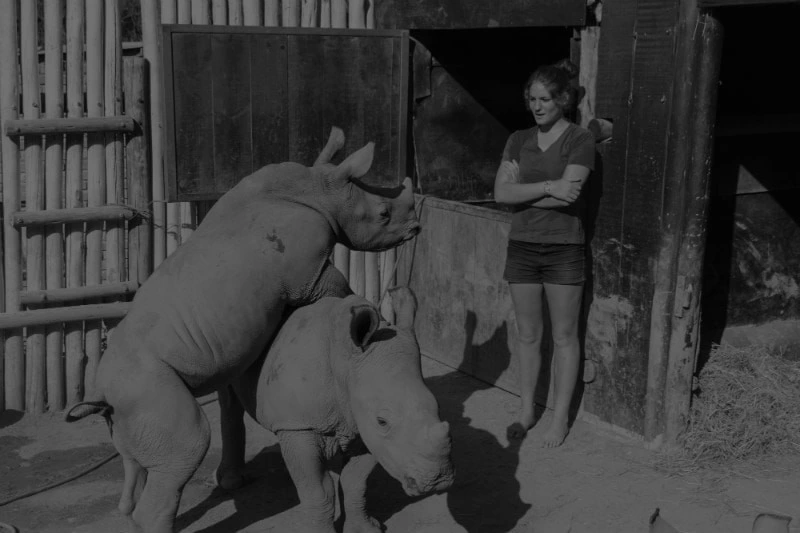10 Fascinating Facts About Pangolins and How You Can Help Them
Pangolin Facts and How You Can Help
Pangolins, the world’s only truly scaly mammals, are increasingly at risk of extinction. Understanding these unique creatures along with their critical conservation challenges can hopefully motivate you to advocate for their survival.
At Working with Wildlife in Khamab Kalahari Reserve, located in South Africa’s pristine Eastern Kalahari Bushveld region, we provide ethical conservation safaris, including but not limited to pangolin monitoring. We are committed to helping these extraordinary animals, and to rehabilitate and protect the habitats they depend upon.
Here are 10 fascinating pangolin facts that shed light on the ground pangolins, the remarkable conservation challenges they face, along with meaningful ways you can contribute directly to their protection.

Ground pangolin rolled into a defensive ball at Khamab Kalahari Reserve
1. Pangolins Are the World’s Most Trafficked Mammals
Tragically, the ten known pangolin species combined (order: Pholidota) are the world’s most trafficked mammals. This illegal wildlife trade for pangolin scales (and to a lesser degree, for bush meat as a delicacy) remains prolific despite international protection and condemnation of the illegal trade. Pangolin scales are erroneously believed to hold medicinal properties, and this misconception continues to fuel demand in some markets.
When threatened, ground pangolins curl into tight balls using their tough scales as protective armour and can lash their powerful tails to dissuade threats. While this adaptation effectively deters natural predators such as lions and hyenas, it makes them easy prey for human poachers who can simply collect them.
For any avid African safari-goer, the ground pangolin is typically regarded as the most elusive mammal. Many guides and staff spend their lives in the African bush without seeing one, so one obvious question remains… How do poachers find them?
The answer, we do not know for sure, but it is believed that the ground pangolin’s tendency to reuse burrows makes them vulnerable to poachers as livestock herders who may have seen a resident pangolin may be willing to share the animal’s location for a fee. As wild habitats in Africa dwindle, so the presence of people in pangolin habitats increases. This means that pangolins previously beyond the detection of people, are now vulnerable to poachers. Another plausible theory is that pangolin poachers may be training dogs to help them locate the animals.
2. Pangolin Scales Are Made of Keratin
Interestingly, pangolin scales are composed of keratin, the same protein found in our own hair and nails. While these keratin scales provide effective defensive armor against a pangolin’s natural predators, as explained above, it makes pangolins vulnerable to human poaching for unfounded medicinal purposes.

Close-up photograph of pangolin scales
3. Ground Pangolins Can Walk on Two Legs
One of the many remarkable behaviors of the Temminck’s ground pangolin (Smutsia temminckii) is their bipedal locomotion. Ground pangolins use their sturdy tails and strong forelimbs for counterbalance, meaning ground pangolins traverse their challenging African terrain on only two legs. Observing such fascinating behavior is a highlight for any guest on a pangolin safari.
Even more interesting is that ground pangolins have been recorded to move as much as 15km in a single night on those two little legs!
4. Activity Patterns Vary with the Seasons
Contrary to popular belief, pangolins are not strictly nocturnal animals. While there may be some variation between older and younger animals, our monitoring so far has shown that pangolins on Khamab Kalahari Reserve exhibit primarily diurnal behavior for most of the year, only shifting to nocturnal habits during the peak heat months of December and January. This change potentially aligns with the increased nighttime activity of their preferred prey during these months. This begs the question – are ground pangolins diurnal, nocturnal, or simply most active when their preferred prey are most active?
5. Pangolins Have a Unique Digestive System
Pangolins lack proper teeth and instead rely on a highly specialized digestive system, consuming ants and termites along with sand which helps to grind their prey inside their stomachs. One can compare this adaptation to a bird’s gizzard, and it further highlights how specialized the ground pangolin is. Furthermore, while ground pangolins do drink water when available, they do not require water and are able to obtain sufficient moisture from their prey alone. Ground pangolin scat is not much more than dried ants, termites, and rounded sand that crumbles into obscurity within a few days.

Ground pangolin scat photographed at Khamab Kalahari Reserve
6. Female Ground Pangolins Are Devoted Mothers
Female pangolins demonstrate an interesting parenting behaviour. In the Kalahari, a young pangolin pup will ride safely atop it’s mother’s tail while she feeds until it is developed enough to forage independently at approximately 3 months of age, while alternating between feeding and riding until then. This pup will stay within the mother’s natal territory for approximately 12 months before moving off. Temminck’s ground pangolin gestation period remains relatively unknown with estimates ranging from 90 – 139 days. It is also possible that ground pangolins might be able to delay birth until better conditions, but for now, there is little known about their gestation.
7. The Electric Fence Problem
In South Africa, electric fences are believed to pose a bigger threat to pangolins than poaching with an estimated 500 – 1000 individuals killed annually on electric fencing. These electrified fences are government mandated for protected areas accommodating dangerous game. These regulations require such areas to have a trip wire at 20cm above the ground to stop animals from escaping with a particular emphasis on lions and African wild dogs.
This happens to be the perfect height for an unsuspecting pangolin attempting to cross over to get shocked on its soft belly. As the animal’s natural defensive response to danger is to roll into a tight defensive ball, ground pangolins unintentionally wrap themselves around this live wire. Even people are cautioned against touching an electric fence by hand as the electric shock can cause an involuntary muscle contraction resulting in gripping the wire uncontrollably. This is precisely what a ground pangolin experiences, an effective death grip around an electrified wire from which cannot free itself. While some adjustments to fencing regulations have been touted as potential solutions, these regulations remain unchanged and a risk to ground pangolins.

Ground Pangolin standing over an electrified fence wire
8. Tasting the Air
Amazingly, pangolins use their tongues to “taste the air” when they yawn, causing them to stick their tongues out almost entirely. A ground pangolin’s tongue is approximately 40 – 60 cm in length and can extend out of the mouth by 20 – 40cm when yawning!

Ground Pangolin tasting the air as seen at Khamab Kalahari Reserve
9. Secret Communication Methods?
The way ground pangolins communicate remains unknown. Urine and scat are obvious means of communication, but it has long been thought that ground pangolins may have additional means of communicating. Ground pangolins have no vocal cords, yet there have been multiple reports of vocalisations observed by researchers. It may be possible that ground pangolins can communicate through low level frequencies, like elephants, which can be detected though the soft pads under their elephant-like feet. For now, this remains unknown. Pangolins are able to vibrate their bodies to warn potential threats as can be heard below.
10. Territorial Behaviours
While not necessarily territorial per se, male ground pangolins notoriously intolerant of other males in their home range and are known to fight with other male ground pangolins to chase them away. Male territories are significantly larger than those of females, and a male’s territory likely overlaps with several females. At Khamab Kalahari Reserve, a single male pangolin has been observed to patrol a territory of approximately 10 000ha.

Close up photograph of a ground pangolin’s face covered in ants
Why These Pangolin Facts Matter for Conservation and How You Can Help Pangolins
Join Ethical Conservation Safaris
Participating in ethical wildlife experiences, like those provided at Working with Wildlife, contributes directly to pangolin monitoring efforts, anti-poaching initiatives, and habitat restoration projects. Your visit has a tangible positive impact on pangolin research and the habitats these animals depend upon.
Raise Awareness and Educate Others
Education is a powerful conservation tool. By spreading information about ground pangolins, you help counter misinformation and reduce consumer demand for pangolin-derived products. Encouraging responsible wildlife tourism and ethical conservation practices also strengthens global protection efforts.
Support Conservation Initiatives
Supporting reputable conservation organizations, either through donations or volunteer participation in responsible conservation projects, can positively impact pangolin survival.
The Johannesburg Wildlife Veterinary Hospital is responsible for the rehabilitation of ground pangolins rescued from the illegal trade and works tirelessly to get these animals fit for release into wild habitats.
Advocate Against Wildlife Trafficking
Voice your support for stricter laws and stronger law enforcement against wildlife trafficking. Engaging with local policymakers, signing petitions, and advocating for stronger protection measures increases pressure on governments and international bodies to prioritize pangolin conservation.
Frequently Asked Questions About Pangolins (FAQs)
These pangolin facts hopefully highlight just how remarkable and endangered these wonderful creatures are!
Book Now
Want to get involved with ground pangolin monitoring for yourself? Join Our Working with Wildlife unique Kalahari Safari Project to help African Wildlife, Contact Us for any other questions, or read our Testimonials page to hear what previous guests say!





